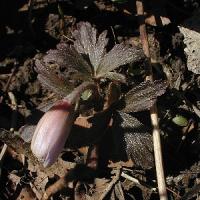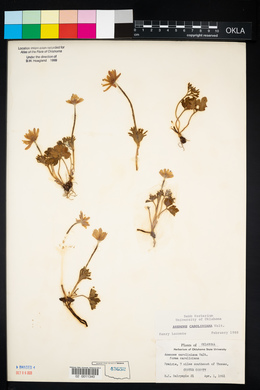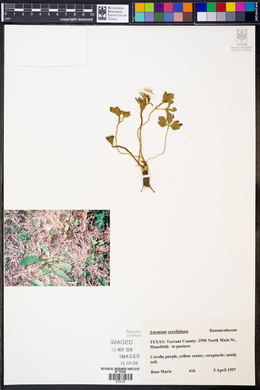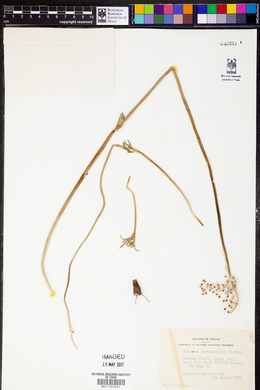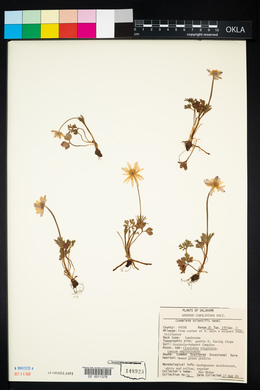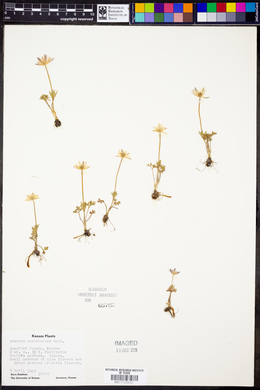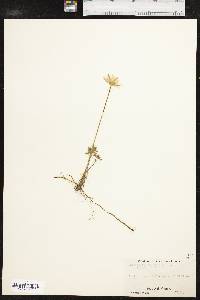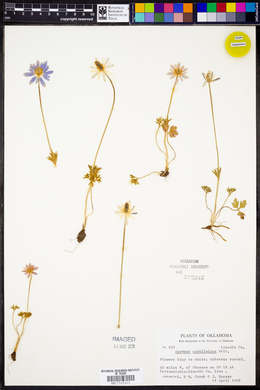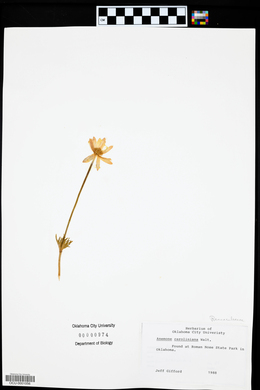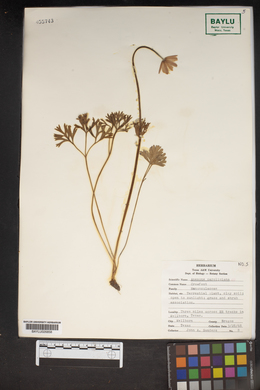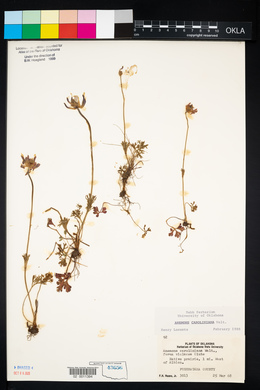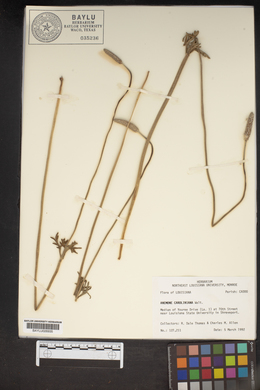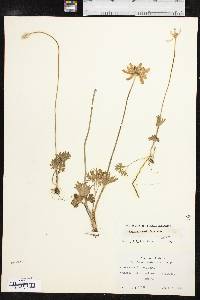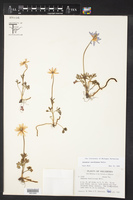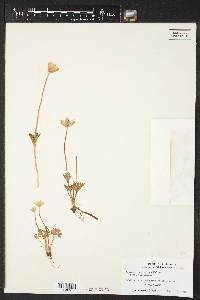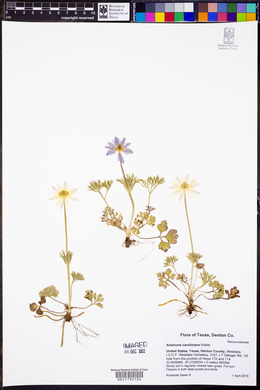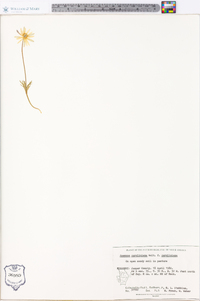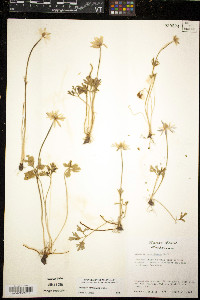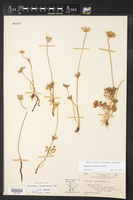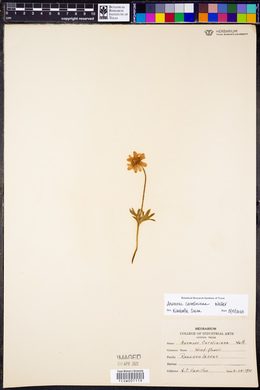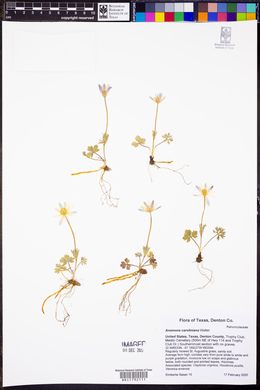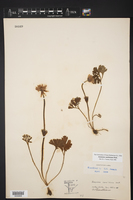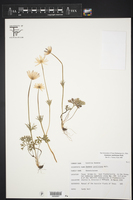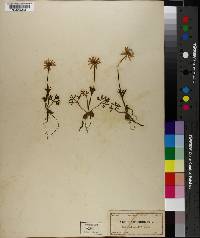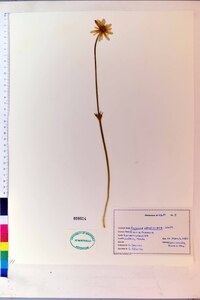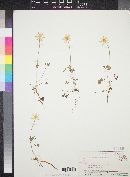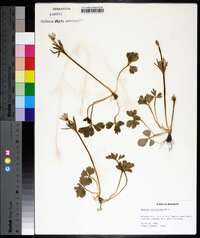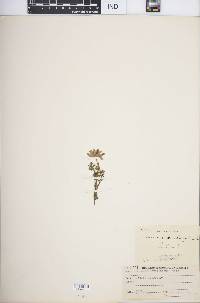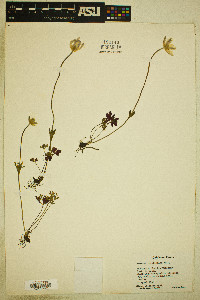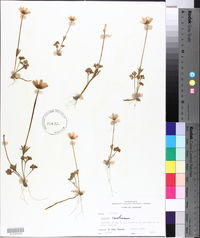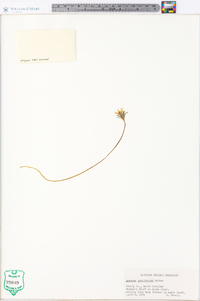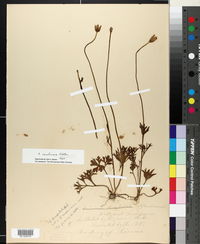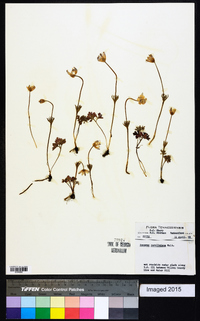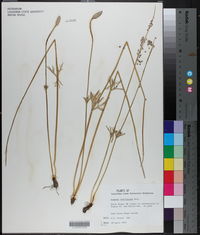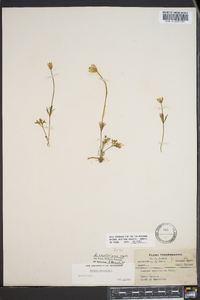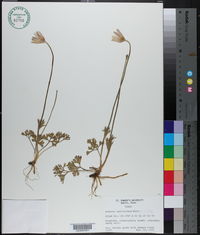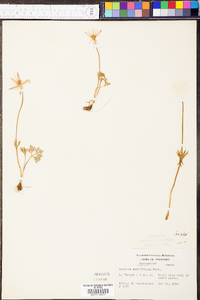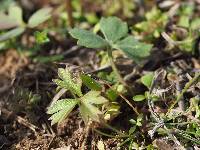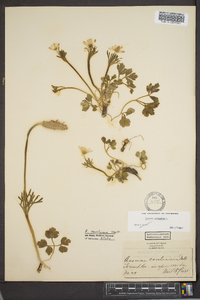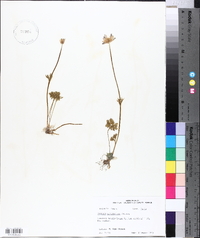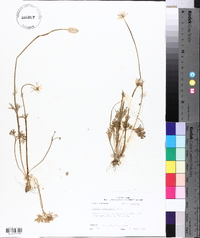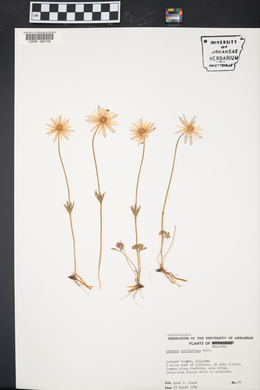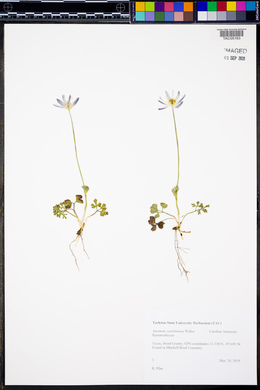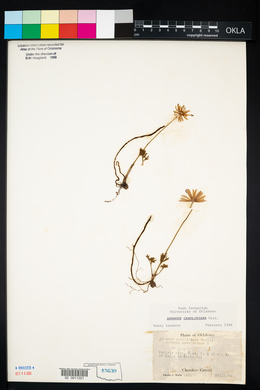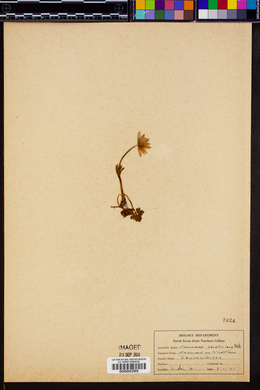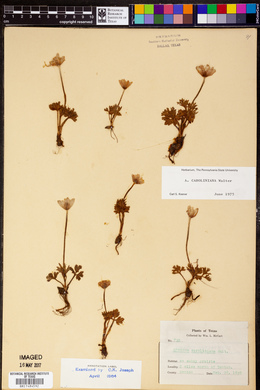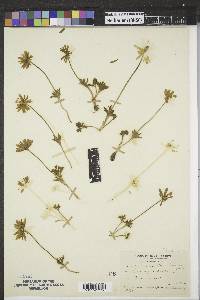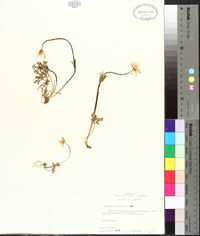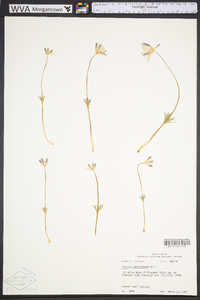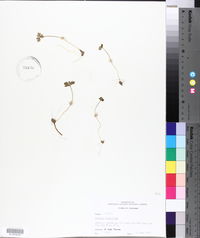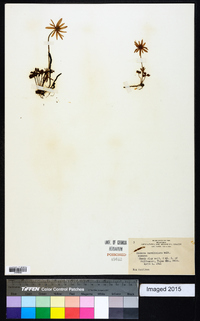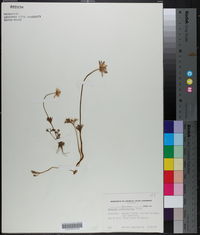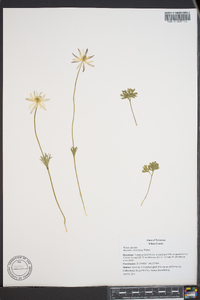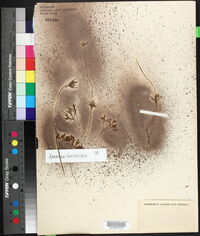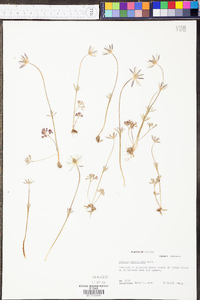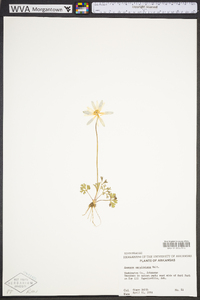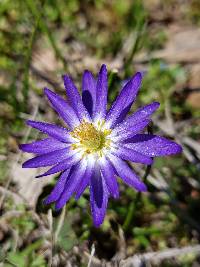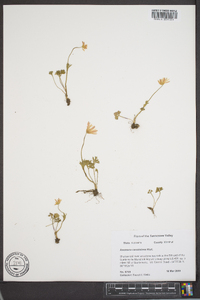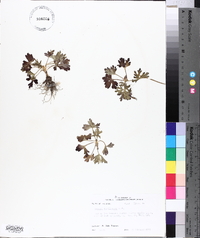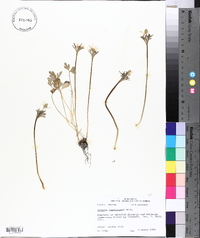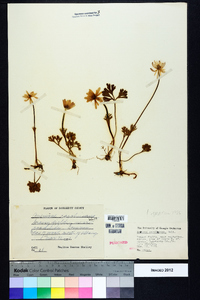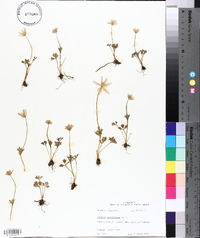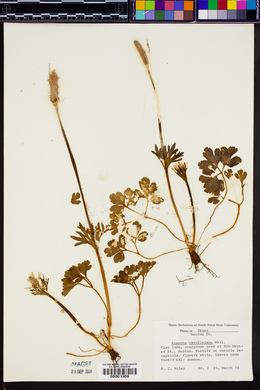
|
|
|
|
Family: Ranunculaceae
Carolina Thimbleweed, more...Carolina anemone
|
Aerial shoots 5-35(-60) cm, from tubers with rhizomes near apex, tubers ascending or vertical, rhizomes horizontal or ascending. Basal leaves 1-3(-5), 1-2-ternate; petiole 3-9(-10) cm; terminal leaflet petiolulate, rarely sessile, obtriangular, 2-3-cleft, 1-3 × 0.8-2(-2.5) cm, base narrowly attenuate to strongly and narrowly cuneate, margins serrate, rarely dissected on distal 2/3, apex obtuse to broadly acute, surfaces glabrous; lateral leaflets ±pinnately 1-2(-3)×-lobed or -parted; ultimate lobes 2-10 mm wide. Inflorescences 1-flowered; peduncle proximally glabrous, distally villous; involucral bracts 3, borne below middle of scape at anthesis, 1-tiered, simple, ±similar to basal leaves, obtriangular, 3-cleft, 1-2.5 cm, bases somewhat clasping, connate, margins incised on distal 1/2, apex acuminate, surfaces sparsely pilose; segments 3, broadly linear; lateral segments 1-2×-lobed or -parted; ultimate lobes 1-2.5 mm wide. Flowers: sepals 10-20(-30), white to rose or blue to purple, linear to oblong, (6-)10-20(-22) × 2-5(-7) mm, abaxially sparsely hairy, adaxially glabrous or nearly so; stamens 50-60. Heads of achenes fusiform; pedicel (5-)10-20 cm. Achenes: body ovoid, 1.5-2.5(-3) × ca. 2 mm, not winged, densely woolly; beak straight, 1.3-2 mm, projecting beyond achene indument, proximally tomentose, not plumose. 2 n =16. Flowering winter-spring (Feb-Apr). Dry prairies, barrens, pastures, meadows, rocky, open woods; 60-700m; Ala., Ark., Ga., Ill., Iowa, Kans., La., Minn., Miss., Mo., Nebr., Okla., S.C., S.Dak., Tenn., Tex., Wis. Anemone caroliniana was recorded from Indiana (Vigo County); it has since been extirpated.
Plants 1-4 dm, from a small, globular tuber that produces 1-several delicate succulent rhizomes; basal lvs deeply 3-parted, the segments deeply and irregularly incised into few or several acute divisions; involucral lvs borne below the middle, sessile, smaller than but otherwise much like the basal; peduncle solitary, villous; sep 10-20, white to rose or purple, 10-22 mm, narrowly oblong; fruiting head narrowly ±ellipsoid, 13-20 mm; achenes densely woolly, the erect style ca = the body and projecting from the wool; 2n=16. Dry prairies and barrens; S.D. to Tex., e. to Wis., Ind., La., and occasionally to Ga., S.C., and N.C. Apr., May. Gleason, Henry A. & Cronquist, Arthur J. 1991. Manual of vascular plants of northeastern United States and adjacent Canada. lxxv + 910 pp. ©The New York Botanical Garden. All rights reserved. Used by permission. From Flora of Indiana (1940) by Charles C. Deam This species was reported by Blatchley in Indiana Geol. Rept. 21: 628. 1897. He says it was reported by Miss Nora Arnold, who knew of its growing for 12-13 years in patches on a hill along Durkey's Ferry Road about 5 miles north of Terre Haute, Vigo County. In April, 1933, I asked Prof. Fred Donaghy of the Terre Haute State Normal School to try to rediscover this species. He found it and sent me specimens. He wrote that a colony about 10 feet square was located on the slope of a bluff opposite Durkey's Ferry. The plants grew in sandy soil among grasses, had very shallow roots, and were 3-8 inches high. ...... Indiana Coefficient of Conservatism: C = 10 Wetland Indicator Status: N/A Diagnostic Traits: Plants usually less than 25 cm tall; basal leaves deeply 3-parted; leaf-like cauline bracts below middle of stem, sessile; flowers 1, white to violet; perianth of 10 or more sepals; achenes wooly. |
This project was made possible in part by the Institute of Museum and Library Services [MG-70-19-0057-19].
Powered by Symbiota


